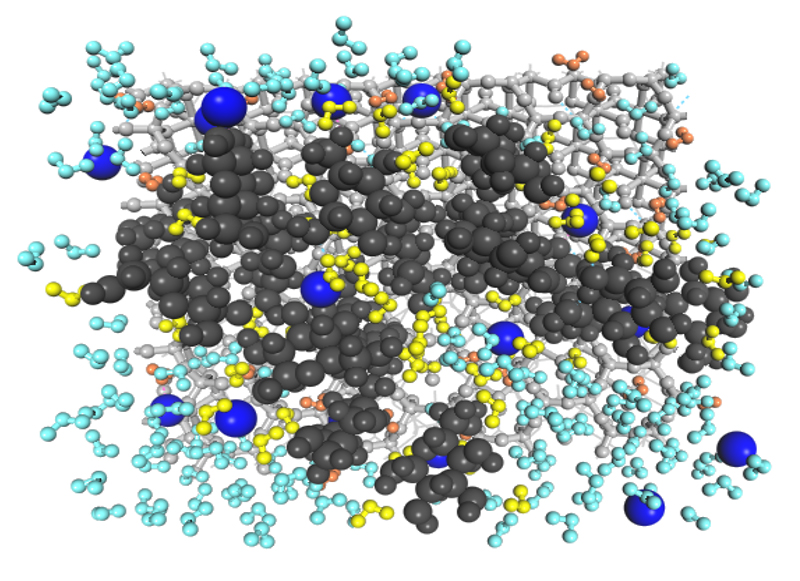Sweet compounds aid water retention in dry soil

Organic material added by plant roots and microbes provides nutritious candy for the soil. Literally. Released cellular sugar fortifies water and nutrient retention, and maintains the porous earth, according to new Cornell research in Advances in Water Resources.
Scientists examined computational simulations and conducted experiments to unravel the effects and behavior of glucose in clay soil, specifically mineral nanopores. The work dug into the chemical processes that promote benevolent water traps in soil crevices.
“Ask any amateur gardener, if you have the right mix of organics and minerals, that’s better for the soil,” said lead author Ludmilla Aristilde, assistant professor of biological and environmental engineering. “Organics and minerals help the soil retain water and provide more porosity; it helps the soil to breathe. Now that we know how the chemical and physical processes work, we can exploit these phenomena for agricultural benefits.”
Plant roots and soil microbes secrete sugars that help maintain moisture around them and in turn help them cope with dry or long-term drought conditions. What was not known was how the ubiquitous presence of simple organics – like the secreted sugars – influenced the soil hydrodynamics.
“Think of the soil as a sponge,” said Aristilde, who said sponges shrink and have very small pores when completely dried up, making them hard to reconstitute quickly upon re-wetting. “In a similar way, if a soil dries up completely, the resulting desiccation can lead to death of beneficial microbes.”
Aristilde and her students found that glucose helps keep the soil moist by chemically capturing water molecules and metal nutrients in the nanopore space. This trapping allows the mineral nanopore to remain open and become more effective at absorbing more water.
“Glucose keeps the pore space available and viable for sustaining moisture in soil crevices, much like a little bit of water keeps a sponge moist,” she said.
Until now scientists knew very little about how organic sugars in the soil worked. While several dynamic chemical interactions occurred, the researchers also revealed how glucose increased immobilization of nutrient salts in the soil, while it improved moisture retention.
Coupling theory and experimental findings, the study shed light on the molecular-to-nanoscale mechanisms that control trapping of water molecules in sugar-enriched clay nanopores.
Said Aristilde: “Understanding how sugars and related molecules influence hydrodynamics in soils can provide additional insight into managing water retention in drought-prone soils.”
The research, “Sugar-Influenced Water Diffusion, Interaction, and Retention in Clay Interlayer Nanopores Probed by Theoretical Simulations and Experimental Spectroscopies,” is available online. It was co-authored by Thalia G. Aoki ’15, Stephen M. Galdi ’16 and graduate student Sabrina E. Kelch. The National Science Foundation provided funding.
This article is written by Blaine Friedlander and was originally published in the Cornell Chronicle on May 9, 2017.
